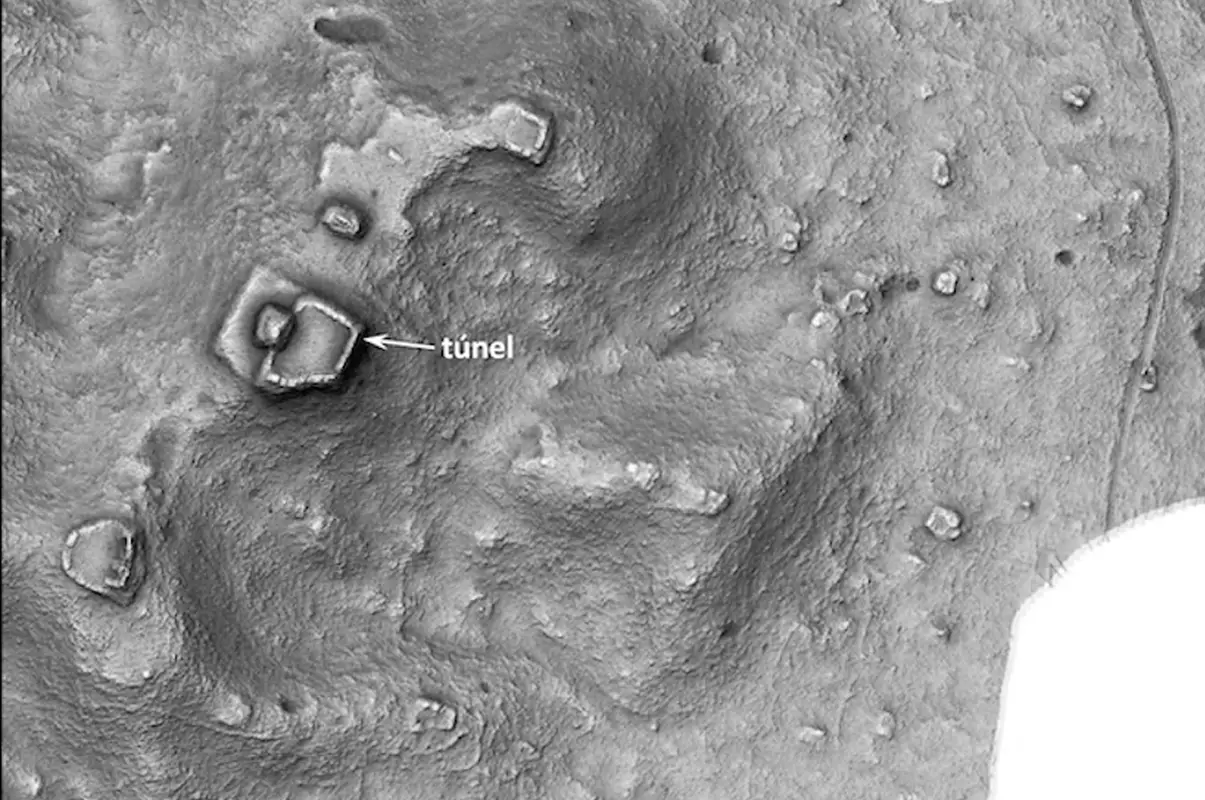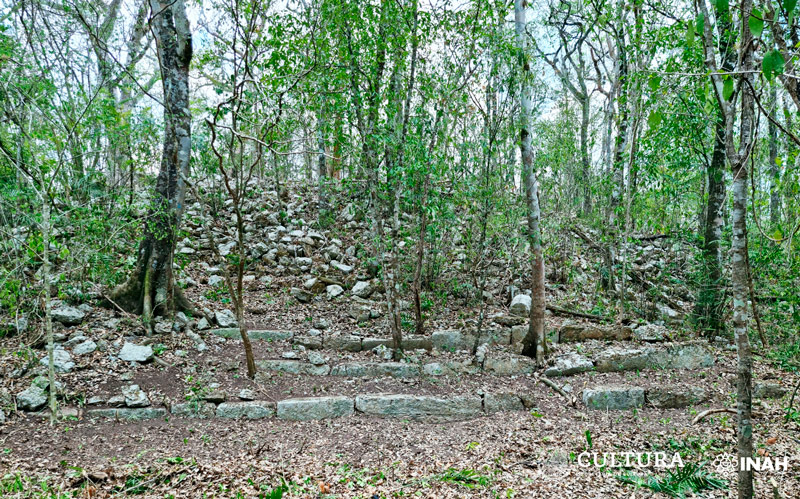Welcome to DU!
The truly grassroots left-of-center political community where regular people, not algorithms, drive the discussions and set the standards.
Join the community:
Create a free account
Support DU (and get rid of ads!):
Become a Star Member
Latest Breaking News
Editorials & Other Articles
General Discussion
The DU Lounge
All Forums
Issue Forums
Culture Forums
Alliance Forums
Region Forums
Support Forums
Help & Search
Latin America
Related: About this forumLiDAR identifies lost settlements in the forests of Campeche

Image Credit : Žiga Kokalj
By:
Mark Milligan
Date:
June 24, 2024
Archaeologists from the National Institute of Anthropology and History (INAH) have identified ancient settlements in the forests of Campeche using LiDAR.
Light Detection and Ranging (LiDAR), is a method of remote sensing using light in the form of a pulsed laser to measure ranges (variable distances) to the Earth. The differences in the laser return times and wavelengths can be used to compile a 3-D digital map of the landscape.
A physical exploration of the sites has shown there to be very few standing walls or architectural decoration, with preliminary dating suggesting that the settlements date from the Late and Terminal Classic periods (AD 600-1000).
Despite the lack of any major urban centres, the LiDAR survey has identified evidence of levelling, a plaza, and a pyramidal construction in a settlement first discovered during the 1990’s (header image). Outside this complex, near its northeast corner, a canal was also observed in the survey that drained the water accumulated in the plaza.
Another site investigated in the survey is a civic-ceremonial centre with buildings that stand up to 13 metres in height. In the eastern sector of this settlement is evidence of a ball court and a substructure possibly from the Early Classic period (AD 200-600).
https://www.heritagedaily.com/2024/06/lidar-identifies-lost-settlements-in-the-forests-of-campeche/152429
1 replies
 = new reply since forum marked as read
Highlight:
NoneDon't highlight anything
5 newestHighlight 5 most recent replies
= new reply since forum marked as read
Highlight:
NoneDon't highlight anything
5 newestHighlight 5 most recent replies
LiDAR identifies lost settlements in the forests of Campeche (Original Post)
Judi Lynn
Jun 2024
OP
Judi Lynn
(164,039 posts)1. An article from one year ago regarding the same region:
This Ancient Maya City Was Hidden in the Jungle for More Than 1,000 Years
Archaeologists surveying the ruins of Ocomtún found pyramids, stone columns and a ballgame court
Sonja Anderson
Daily Correspondent
June 26, 2023

An inscribed stone found at the Ocomtún site Ivan Šprajc via National Institute of Anthropology and History
Researchers from Mexico’s National Institute of Anthropology and History (INAH) have discovered the remains of a centuries-old Maya city in the Balamkú ecological reserve on the Yucatán Peninsula.
In a statement, lead archaeologist Ivan Šprajc says the settlement probably served as an important regional center during the Maya Classic period, which spanned 250 to 1000 C.E. The team named the newly discovered ruins Ocomtún—“stone column” in Yucatec Mayan—in honor of the many columns found at the site.
“The biggest surprise turned out to be the site located on a ‘peninsula’ of high ground, surrounded by extensive wetlands,” says Šprajc in the statement, per Google Translate. “Its monumental nucleus covers more than [123 acres] and has various large buildings, including several pyramidal structures [nearly 50 feet] high.”

Ruins of a Ocomtún building, featuring a staircase Ivan Šprajc via National Institute of Anthropology and History
Maya builders often centered their cities around pyramids like the ones found in Ocomtún, with the structures fulfilling religious purposes. Large, climbable pyramids like those at Uxmal and Chichén Itzá were typically used for spiritual training and rituals, including sacrifices, reported Teo Spengler for USA Today in 2018. Others weren’t meant to be touched, instead serving as sacred ornaments and convenient landmarks for navigation. The stone cylinders for which Ocomtún is named likely formed part of the entrances to upper rooms in the city’s buildings.
More:
https://www.smithsonianmag.com/smart-news/this-ancient-maya-city-was-hidden-in-the-jungle-for-over-1000-years-180982427/
Archaeologists surveying the ruins of Ocomtún found pyramids, stone columns and a ballgame court
Sonja Anderson
Daily Correspondent
June 26, 2023

An inscribed stone found at the Ocomtún site Ivan Šprajc via National Institute of Anthropology and History
Researchers from Mexico’s National Institute of Anthropology and History (INAH) have discovered the remains of a centuries-old Maya city in the Balamkú ecological reserve on the Yucatán Peninsula.
In a statement, lead archaeologist Ivan Šprajc says the settlement probably served as an important regional center during the Maya Classic period, which spanned 250 to 1000 C.E. The team named the newly discovered ruins Ocomtún—“stone column” in Yucatec Mayan—in honor of the many columns found at the site.
“The biggest surprise turned out to be the site located on a ‘peninsula’ of high ground, surrounded by extensive wetlands,” says Šprajc in the statement, per Google Translate. “Its monumental nucleus covers more than [123 acres] and has various large buildings, including several pyramidal structures [nearly 50 feet] high.”

Ruins of a Ocomtún building, featuring a staircase Ivan Šprajc via National Institute of Anthropology and History
Maya builders often centered their cities around pyramids like the ones found in Ocomtún, with the structures fulfilling religious purposes. Large, climbable pyramids like those at Uxmal and Chichén Itzá were typically used for spiritual training and rituals, including sacrifices, reported Teo Spengler for USA Today in 2018. Others weren’t meant to be touched, instead serving as sacred ornaments and convenient landmarks for navigation. The stone cylinders for which Ocomtún is named likely formed part of the entrances to upper rooms in the city’s buildings.
More:
https://www.smithsonianmag.com/smart-news/this-ancient-maya-city-was-hidden-in-the-jungle-for-over-1000-years-180982427/